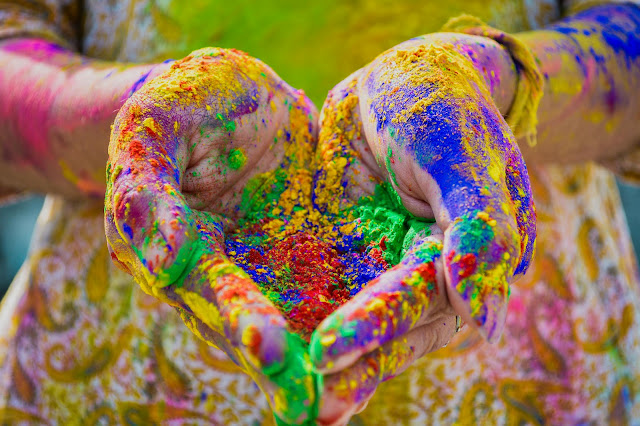Microdermabrasion is safe for almost everyone, doesn’t require anesthesia, and has shown promising results in clinical studies.
By removing cells from your outermost layer of skin, microdermabrasion promotes new cells to regenerate more quickly than they would ordinarily. The result is skin that looks firmer, more toned, and more youthful.
But the benefits of microdermabrasion are somewhat limited, and it won’t work for everyone the same way. This article will explore the potential benefits of microdermabrasion.
Area of Use
Microdermabrasion is typically used on these areas:
- face, including neck, jawline, cheekbones, or forehead
- upper thighs
- buttocks
- hips
- abdomen and waistline
There’s also a full-body microdermabrasion treatment that targets all of the above and more, avoiding areas where your skin is thin or irregular, such as your ears, feet, and hands.
Uses and benefits
Microdermabrasion has been found as an effective treatment for:
- wrinkles
- stretch marks
- uneven skin tone
- melasma
- hyperpigmentation
- scarring
Microdermabrasion may require repeated treatment sessions for you to see desired results. The amount of time you spend getting the treatment can vary depending on its purpose and your expectations.
Reduce lines, wrinkles, and dull-looking skin
One of the most common reasons people use microdermabrasion is to diminish the appearance of fine lines and wrinkles that can happen from natural aging, stress, and sun damage or photoaging.
While microdermabrasion works well for some people, your experience may vary. The location of your wrinkles and the amount of treatments you receive will determine how effective results will be. Following a skin care routine that includes a moisturizer and a toner may improve your results.
Treat age spots and uneven pigmentation
Some people try microdermabrasion for treatment of hyperpigmentation. This can refer to melasma, or any type of aging spots or darker patches on your skin.
It’s likely you’ll need more than just microdermabrasion treatments to see results for hyperpigmentation. Topical vitamin C and laser therapy are some complementary treatment recommendations with microdermabrasion. The good news is, you might need as few as two treatments to notice a difference.
Shrink enlarged pores and blackheads
Microdermabrasion isn’t recommended if you have an active breakout of acne or irritated skin, which includes blackheads. But if you get blackheads often, the treatment may be a way to shrink your pores.
Microdermabrasion is recommended by some dermatologists as a treatment for improving your skin’s conditioning and making pores less visible.
An aesthetician experienced with microdermabrasion or a dermatologist can help you decide on a treatment plan.
Treat acne and acne scarsMicrodermabrasion won’t work on an active breakout — in fact, it could aggravate your symptoms and make the breakout last longer. But microdermabrasion, may have a positive effect on acne, depending on what triggers your acne.
It’s also been demonstrated as effective for decreasing the visibility of acne scars. Keep in mind that microdermabrasion won’t be able to erase deep acne scars.
On the other hand, microdermabrasion doesn’t require anesthesia or any recovery time. This makes it an ideal treatment for some people with acne scars that may want to avoid more intense treatments.
Microdermabrasion won’t work on an active breakout — in fact, it could aggravate your symptoms and make the breakout last longer. But microdermabrasion, may have a positive effect on acne, depending on what triggers your acne.
It’s also
On the other hand, microdermabrasion doesn’t require anesthesia or any recovery time. This makes it an ideal treatment for some people with acne scars that may want to avoid more intense treatments.
Fade stretch marksMicrodermabrasion is at least as effective as other popular topical treatments, including tretinoin cream, for the treatment of stretch marks.
Microdermabrasion encourages cell turnover, which can speed your skin’s ability to healing. That could be why the treatment is especially effective when stretch marks first appear.
How does microdermabrasion work?
Microdermabrasion is a cosmetic procedure that exfoliates your skin cells. This process is performed by a skin care professional using a special microdermabrasion device.
There are two main microdermabrasion techniques:
- Crystal microdermabrasion. This method involves tiny particles being directed at your face through a wand.
- Diamond-tip microdermabrasion. This involves an applicator that makes direct contact with your skin as it exfoliates.
Both techniques work by loosening and removing dead skin cells to reveal younger-looking cells.
Microdermabrasion is at least as effective as other popular topical treatments, including tretinoin cream, for the treatment of stretch marks.
Microdermabrasion encourages cell turnover, which can speed your skin’s ability to healing. That could be why the treatment is especially effective when stretch marks first appear.
How does microdermabrasion work?
Microdermabrasion is a cosmetic procedure that exfoliates your skin cells. This process is performed by a skin care professional using a special microdermabrasion device.
There are two main microdermabrasion techniques:
- Crystal microdermabrasion. This method involves tiny particles being directed at your face through a wand.
- Diamond-tip microdermabrasion. This involves an applicator that makes direct contact with your skin as it exfoliates.
Both techniques work by loosening and removing dead skin cells to reveal younger-looking cells.









